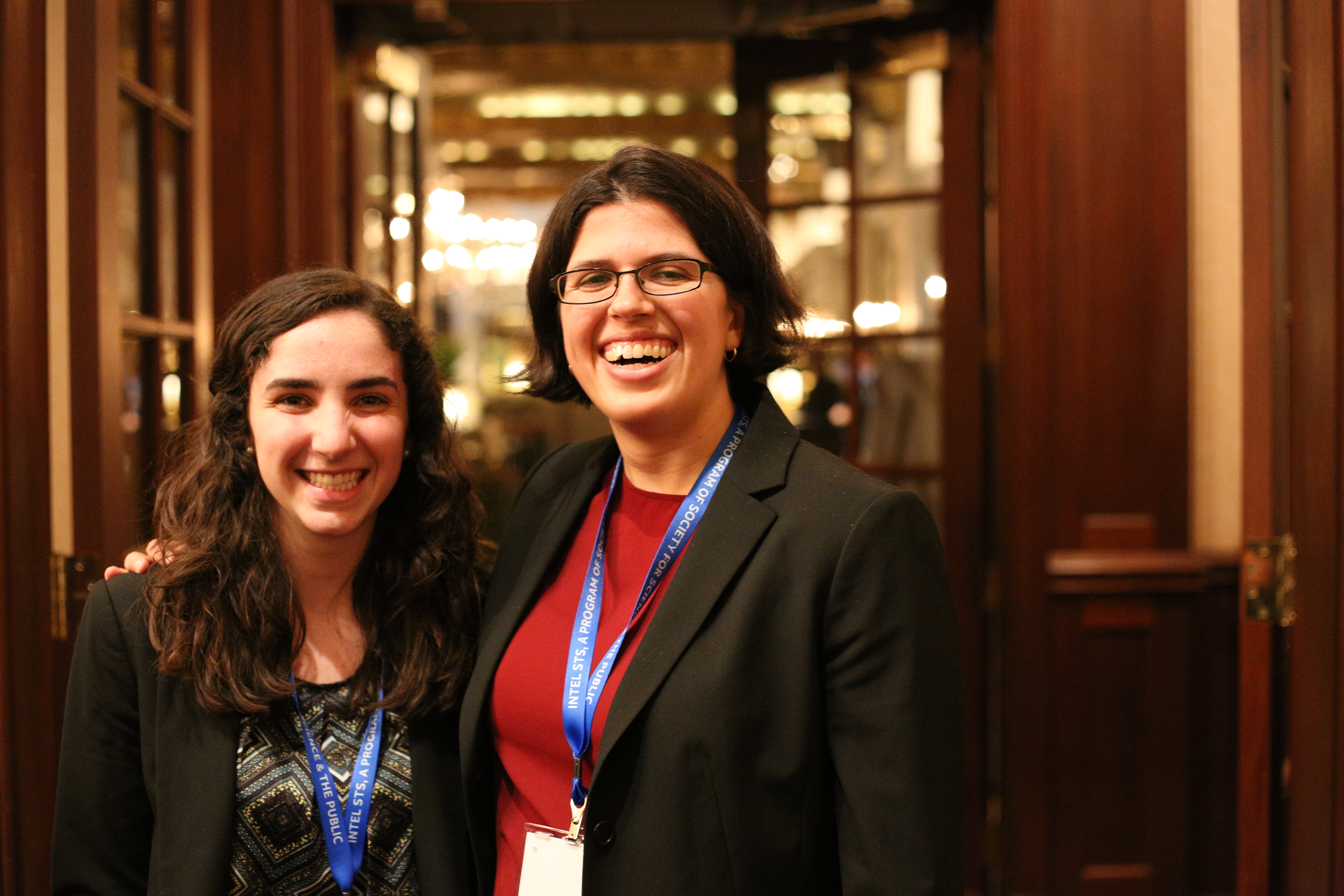Sixteen years later, youngest Intel STS top winner returns to speak to finalists

In 1999, Natalia Toro became the youngest Intel Science Talent Search top winner. She was 14. Natalia is now a particle physicist on the faculty of the Perimeter Institute for Theoretical Physics whose research focuses on finding new ways to test our understanding of the laws of nature. Natalia studied physics and mathematics as an undergraduate at Massachusetts Institute of Technology, completed her PhD in theoretical particle physics at Harvard, and was a postdoctoral fellow at Stanford University. She graciously agreed to return and speak to the Intel STS 2015 finalists during their week in Washington, D.C.
Below are highlights from her speech:
“I haven’t been back for 16 years, but being here tonight brings back so many memories. More than anything else about the experience, I was awed by the fellow finalists and the people I met here. I remember the conversations I had with fellow finalists about the judge’s questions, more so than I remember the judging itself. It was the first time that I felt surrounded by people that had similar interests and were as excited about science as me but also really diverse. A few of them are still really good friends of mine today. It was the first place I realized the value of seeking out people that are both supportive and challenging.”
“I’ve been obsessed with physics since I did a 6th grade book report. I tell people I’m in 27th grade right now. I never took time off or had a job outside of physics.”

“The path to good ideas is full of serendipity, happenstance, and good luck. At a conference I went to, even though I was a theorist, I decided to go to a series of 4 talks in a row by a group of experimental physicists from MIT. The Large Hadron Collider (LHC) experiment was about to start, so there was a lot of conversation about what to do with the data that would be generated. This group wanted to understand the whole dataset and look at the problem globally. Their idea to break up items in a different way was inspiring. I later got together with some colleagues for what we called the LHC Olympics, and proceeded to work on the theories for approximately two years even before the LHC started collecting data.”
“My strength as a scientist is not so much solving the hard problems but in discovering the overlooked ones.”
“Success doesn’t make it easier to find a new problem and solve again, in my opinion it makes it harder. After working on the LHC data for several years, I took a step back to smaller science at a facility in Newport News, VA where we look for new forces that might have been missed in prior experiments because they are very weak. I like being able to work on the border of theory and experiments. Working on research at this smaller facility is definitely different, and it’s fun because it’s hands-on and you really get a chance to know your team. Even as a theorist, I get the chance to get my hands dirty. Science at this scale can be one five-year adventure after another in comparison to “big science” like the LHC, which can last for a lifetime.”
“Winning at Intel STS made me a lot less afraid of research. The biggest impact it had on my life was that without the experience, I might have given up. It gave me the confidence to preserverse and motivated me to learn a lot more. There is real power in what you learn for what you are able to do.”


